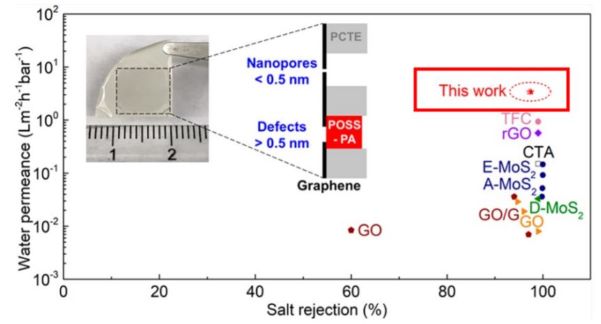Description:
Summary
Vanderbilt researchers have developed an atomically thin membrane with extremely high selectivity and permeability for use in desalination and nanofiltration applications.
Addressed Need
Water scarcity has emerged as a global problem, impacting almost a fifth of the world’s population, as salt water comprises a majority of the earth’s available water. To attack the problem of water purification and desalination, the industry is turning towards membrane technology, which can be 10 times more energy efficient than thermal desalination processes.
Technology Description
An ideal desalination membrane should exhibit minimum thickness in order to maximize water permeance and narrow pore size distribution for efficient ionic/ molecular separations. Additionally, higher permeance allows for a smaller footprint of the corresponding desalination system and lower capital and operating costs. The present technology achieves its ultrathin profile by utilizing atomically thin graphene and a novel process to precisely control the size of nanoscale holes, thereby creating a highly selective, atomically thin membrane that prevents unwanted particles from crossing the boundary. This membrane is able to achieve high water permeance (up to 23 times higher than conventional desalination membranes) while also providing greater than 97% salt rejection and ~100% rejection of organic molecules.
Commercial Applications
The ability to precisely engineer the nanoscale pore size in this membrane allows for highly accurate size-selective filtering. While water desalination is one promising use for this membrane, this membrane can also be used for dialysis, pharmaceutical separation, and a host of other nanoscale separation processes. The key commercial advantage of this membrane is the ability to perform size-selective separation, breaking the traditional permeance vs. selectivity tradeoff required with commercial polymer membranes.
Technology Development & IP Status
Testing, refinement, and scale-up of the membrane is ongoing, and a PCT application has been filed.

Figure 1: The high permeance and salt rejection rate of this membrane is compared with existing membrane technologies, illustrating superior performance of the membrane. Selective pore sizing of the membrane is illustrated in the figure inset.